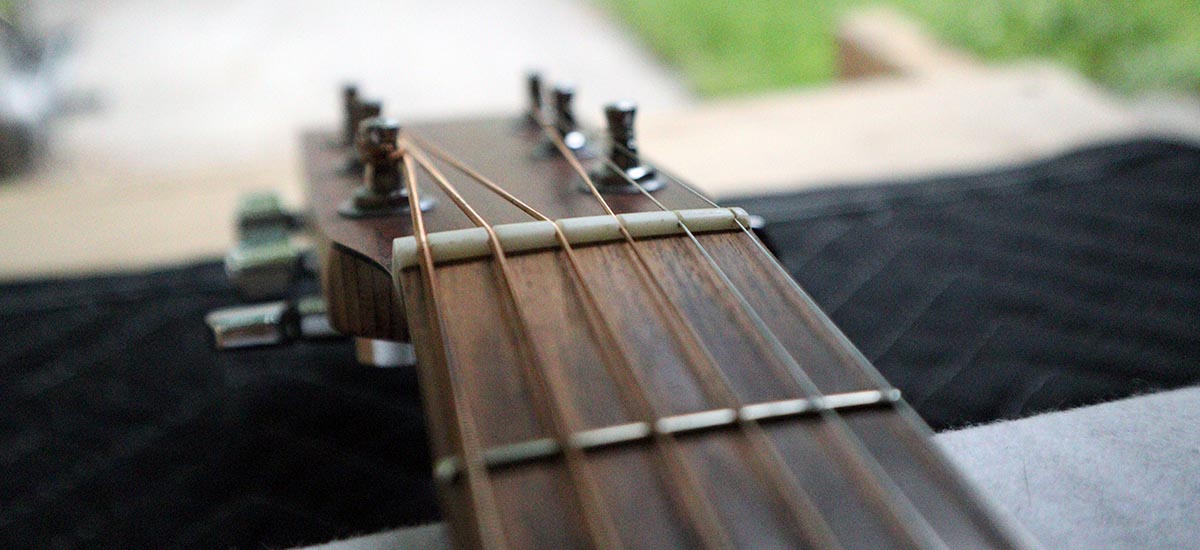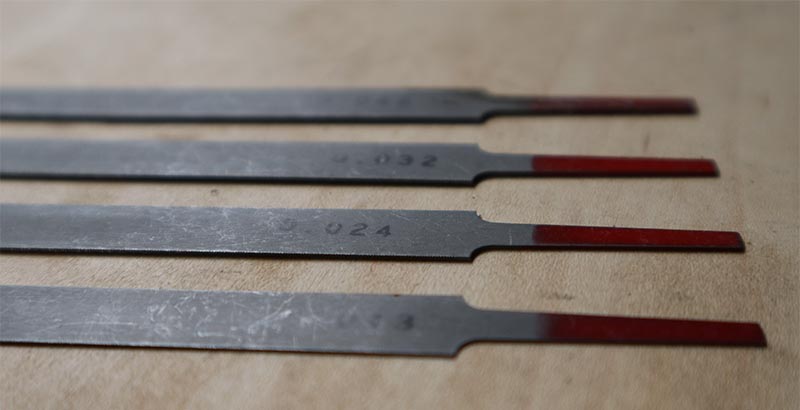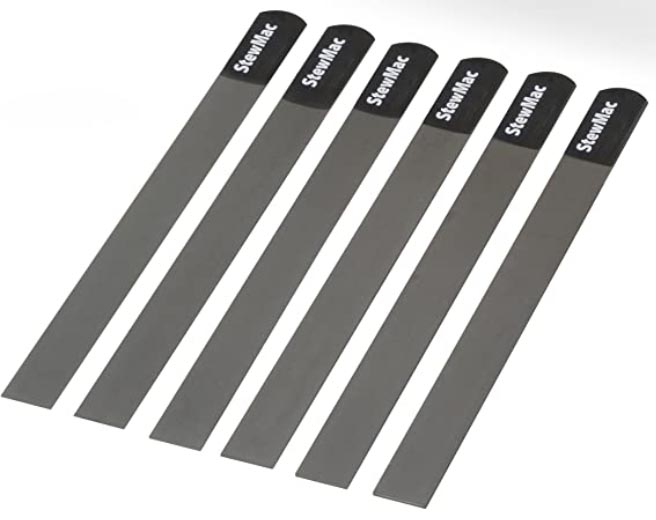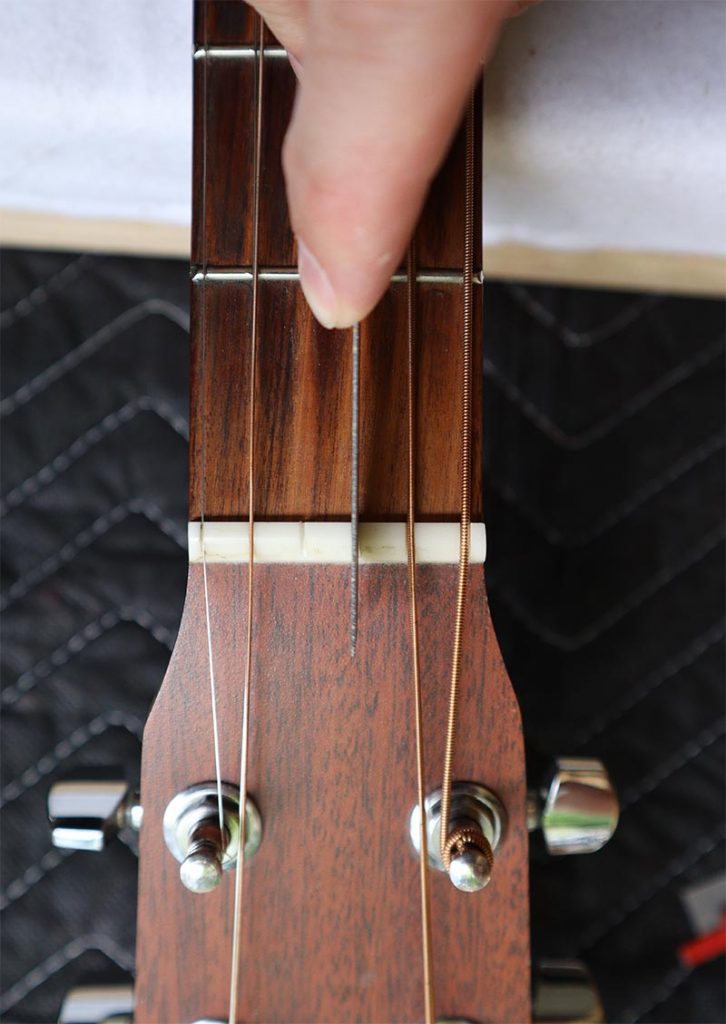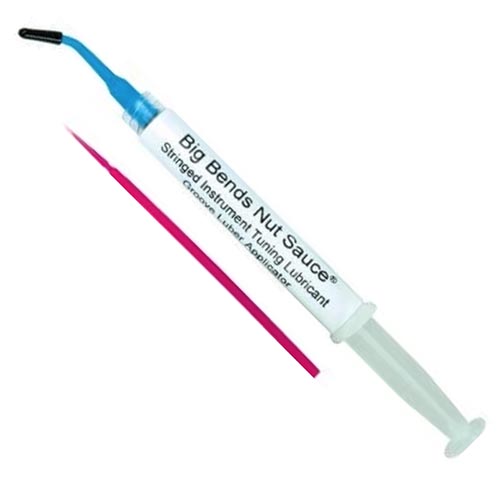A nut that isn’t cut currently and is binding the guitar strings will exhibit problems ranging from tuning instability, and strings breaking at the nut, to unwanted overtones, and loud pings when a string is tuned. Fixing improperly cut, or worn out nut slots is an easy process. There are some critical techniques I’ll cover in this article to ensure the nut slots on your guitar are cut perfectly and provide the best sound and tuning possible.
Table of Contents
What Causes String Binding in the Guitar Nut
String binding in the guitar nut occurs when the nut slot pinches the sides of the guitar string, hindering its movement. This can cause the tension on one side of the nut to be different than the tension on the other side.
For instance, tuning a string sharp will result in the string being tighter on the tuner side of the nut than on the fretboard side. This tension differential is either equalized slowly, or when a string is played hard, or bent. This causes a maddening tuning instability that will get under any player’s skin.
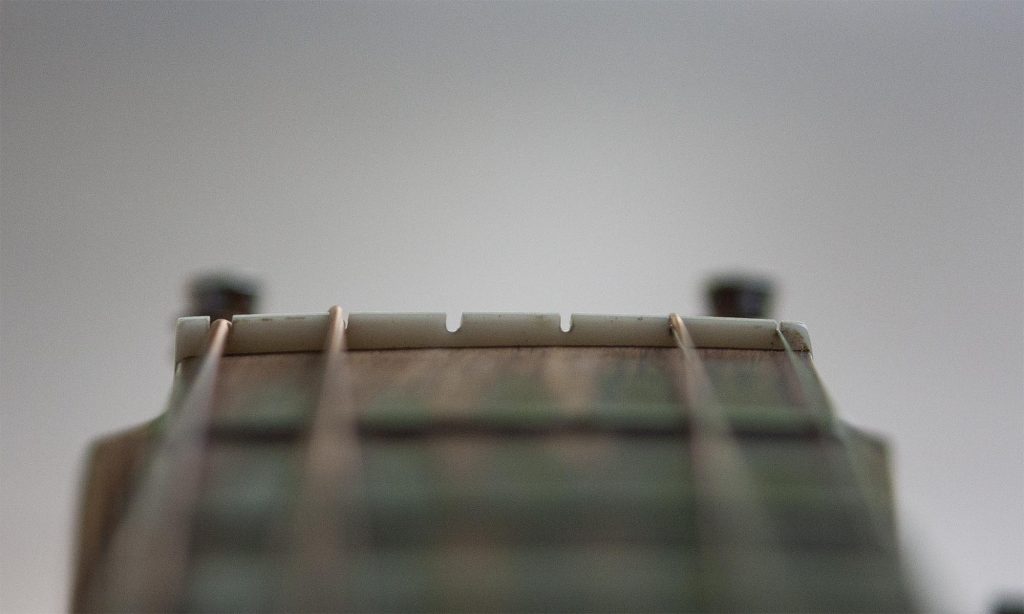
Two Types and Causes of String Binding
There are two types of pinching that occurs from a wayward nut. These can happen separately, or together at the same time.
Side Pinching
Side pinching occurs when a nut slot is too small for the string that is going in it. This causes pressure on the sides of the string that can cause tuning issues, but most often results in overtones and harmonics that shouldn’t be there.
Think of how lightly you touch a string to get the perfect harmonic squeal. A nut needs to apply just barely the right pressure to create some nasty, unwanted frequencies. First make sure you’ve got a fresh string on the guitar (old strings are notorious for unwanted frequencies), if the new string is still making these sounds then there’s a good chance you’ve got some side pinching, nut binding.
This commonly occurs when moving to larger gauge strings. Be extra mindful when swapping gauges to make sure that the strings can move freely in the existing nut slots and no tuning instability exists. If it does, you’ll need to widen the nut slots slightly for the new strings.
V Pinching
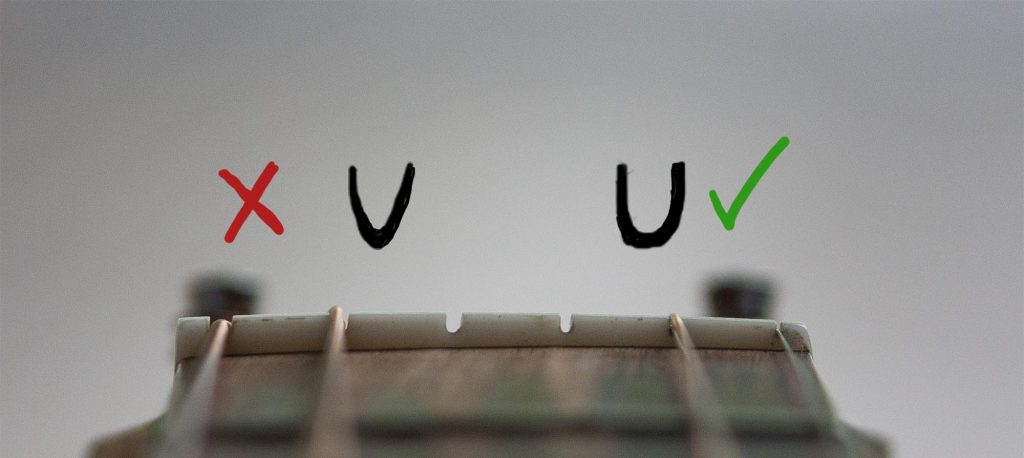
V Pinching in a nut slot is the most common form of string binding and occurs from either poorly cut nuts at the factory, or from the natural wear and tear of the string grinding away in the nut.
Instead of a nice rounded bottom for the string to seat into, the string is wedged into a V which causes a lesser form of side pinching. Although the side pinching may not be as pronounced, it only takes a light touch for a harmonic to be added to the open string’s note.
Unless a guitar is brand new, this is considered regular wear and tear of a guitar and is part of general maintenance. Having a set of nut files on hand is essential for any guitar player who wants to perform their own guitar maintenance.
How to Identify Nut Binding
As I suggest with any guitar troubleshooting that has to do with sound the strings are making, always start with a fresh set of strings. Strings are cheap, and this quickly rules out a bad string that is causing whatever weird noise you’re trying to track down. Remember that one of the signature characteristics of old strings are unwanted harmonics, and tuning instability.
Ok, now that you’ve got a fresh set of strings on the guitar, remember:
Nut Issues are an open string problem
The easiest way to determine if an odd sound is the result of a bad nut slot is to simply play the string open and then fret anywhere on the neck. Does the weird sound go away when you fret the note? If it does, then that points to the nut being the culprit. If the weird sound is still there, the problem is not at the nut and is somewhere else.
A simple test for nut binding
There is another simple test that will tell you right away if you’re experiencing significant string binding at the nut.
- Make sure your strings are properly stretched.
- Tune a string up from a note below it. (example: take the G string, tune down to F, lift string at 12th fret, or stretch string to equalize tension over the nut, then tune back to G)
- Play the open string and watch your tuner.
- Now press the string behind the nut by the tuning machine.
- Play the note again. If the open string is now showing sharper than it was before, the nut is binding the string.
This simple test determines if there is unequal tension on either side of the nut. You can also determine this by tuning up to a note, pulling the string in the same way as when you stretch new strings, and seeing if the note has gone sharp. If the note goes sharp in any of these situations then proceed to how to properly cut a nut slot section.
How to Properly Cut Nut Slots
Tools Needed For Cutting Nut Slots
A good set of nut slot files are essential to cutting slots correctly. These are the nut files I use for all of the nut work I do. A good set of nut files makes all the difference for fixing nut slots, or cutting brand new ones. I’m not sure where I bought these from, but I’d suggest the set from StewMac. They’re pricey, but are well worth it to elevate your nut work to the pro level.
I don’t recommend the string style files. They may work for very light nut slot maintenance, but don’t allow for detailed work that gets the perfect shape and slope of the nut slot. As we’ll explore next, the angle that the nut slot is cut is incredibly important.
There are two parts to cutting a nut slot, first is the profile. This is the shape of the slot when looking down the neck. We want to see a smooth, rounded bottom to the nut slot without the V shape that can cause string binding.
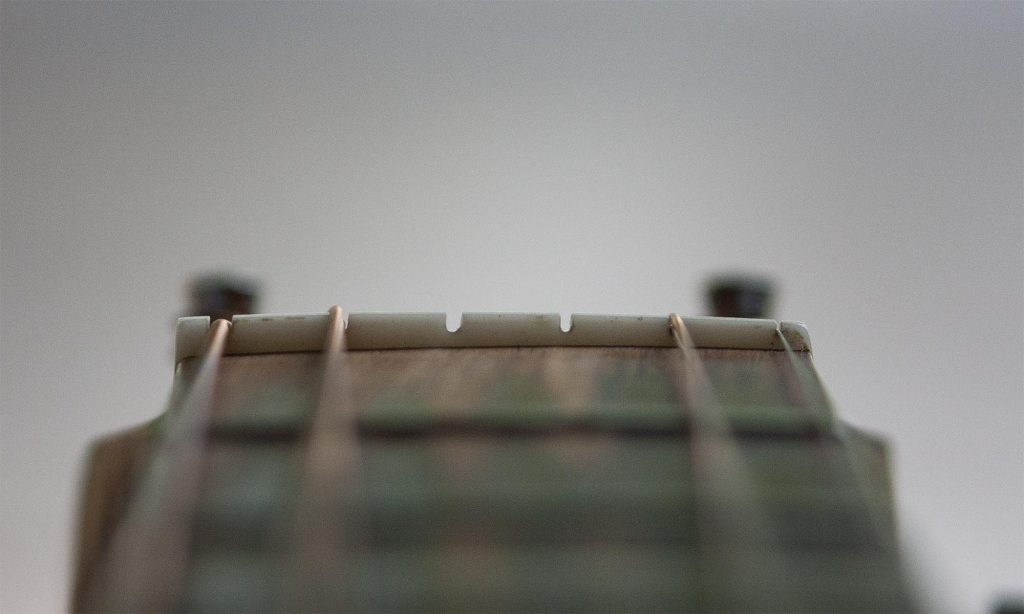
The second part is the brake angle and secondary cut. These cuts are where you see the attention to detail of either a manufacturer or a guitar tech. A properly cut nut slot not only alleviates unwanted harmonics and tuning instability, but also channels the string at the correct angles toward their respective tuning machine which helps intonation, sustain, and playability.
Taking a look at these two examples of nut slot profiles, we can see that our goal is an even slot with a rounded bottom that is just slightly more shallow than the string gauge. This minimizes the contact surface area of the nut to the string cutting down on unwanted harmonics.
A nut slot shouldn’t pinch the string from the sides, but shouldn’t be so loose that the string can move side-to-side. If a string slot is too wide, the side-to-side movement will allow the string to quickly wear away the nut slot which will require a replacement nut or a fill and recut.
The second part is incredibly important to a clean tone. The angle that the string moves over the nut into the tuner is called the nut break angle, and plays a large role in the clarity of tone and tuning stability of an open string.
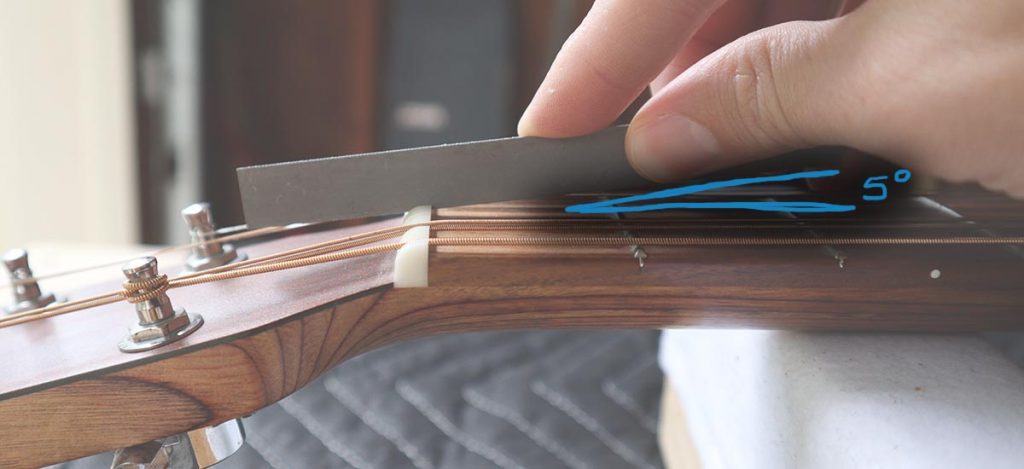
Always make your first nut slot cut with about 5 degrees of angle. This doesn’t need to be exact, but make it look like the picture above.
The string is now making contact with the entire nut through the slot. In order to mitigate some potential harmonic artifacts, let’s make our second cut which will focus pressure to the front of the nut slot and minimize material contact.
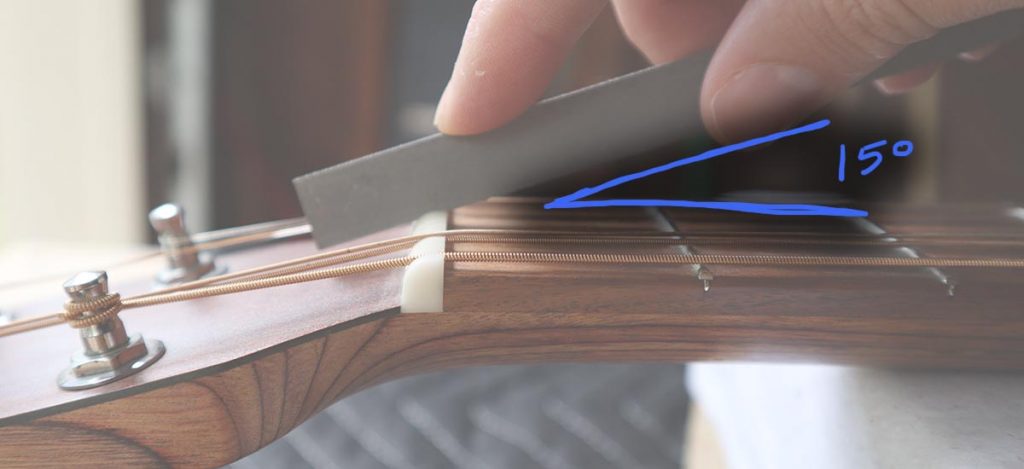
This second cut is made at a higher angle and determines the slot angle in the back half of the nut. It also should point toward the string tuner in order to direct tension and alleviate pressure points on the nut material.
Take a look at the next pictures from above. The first one is of the first cut. This is always made perpendicular to the nut itself and should never be angled. The second cut only take material from the back half of the nut and aims at the appropriate tuner.
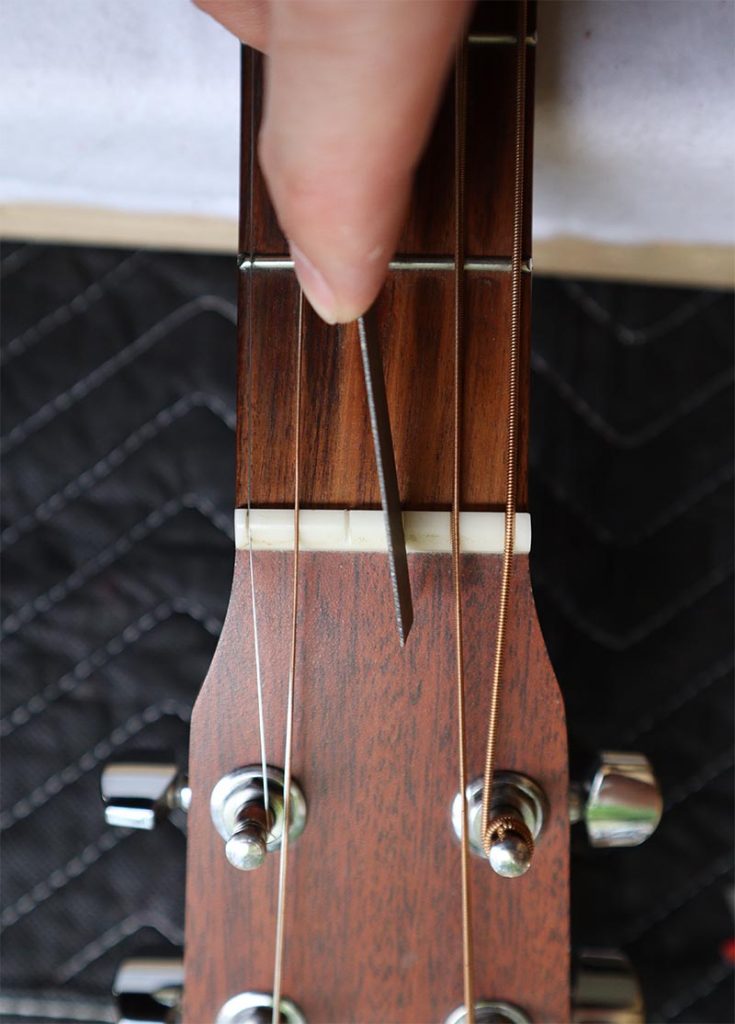
I’ve left out nut slot depth
One subject you may have noticed I’ve left out all together is nut slot depth. This is incredibly important and only isn’t mentioned here because this is a guitar setup subject and not specifically related to binding of guitar strings.
For more information on determining nut slot depth check out my article Setup Like a Pro: Cutting the Perfect Nut.
I mentioned the simple test earlier that says an open string with odd sounds points to a nut issue. There are two other places unwanted noise could be coming from that you should be aware of. If the nut slot is cut too low the string could be too close to the first fret which could cause fret buzz or unwanted harmonics. The second is at the bridge which could introduce similar artifacts into an open string. Typically these can be heard by listening closely to the guitar unplugged (if electric) and your ear should be able to isolate the origin of the noise.
Lubricate Your Nut
Lubricating the nut isn’t a fix for nut binding, but it can help and relieve some of the common issues we’ve talked about. Often this is used as a bandaid when true nut works needs to be done.
However, it’s good practice to lubricate the nut slots of your guitar if you’ve fixed the nut and are still dealing with some of the issues discussed in this article. I like to use a dry material like graphite, but tons of guitar players swear by Nut Sauce. Check out the Amazon reviews, it’s pretty tough to argue against that.
